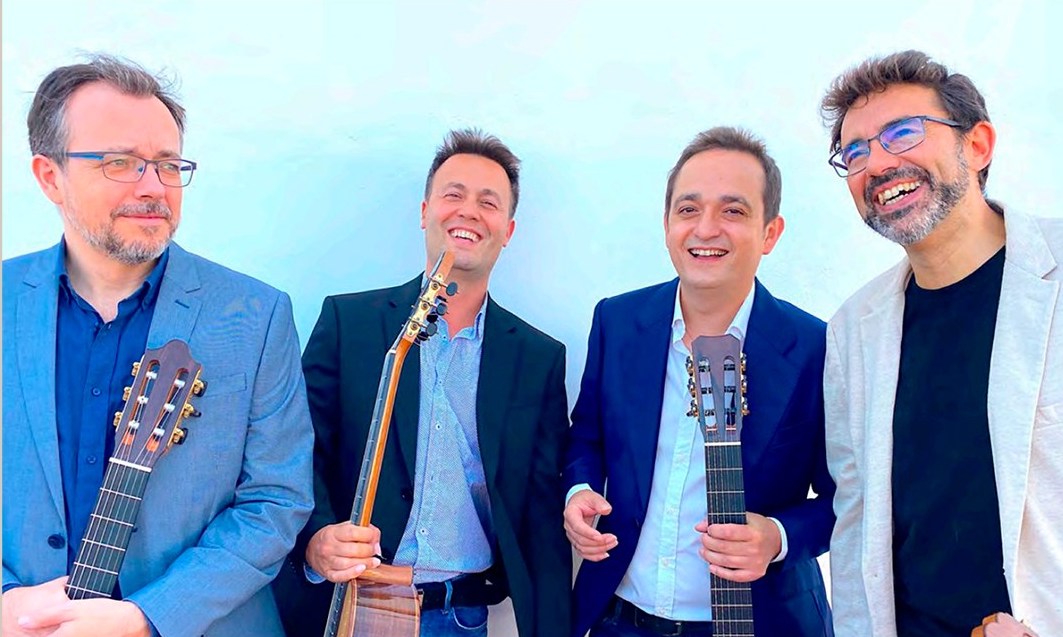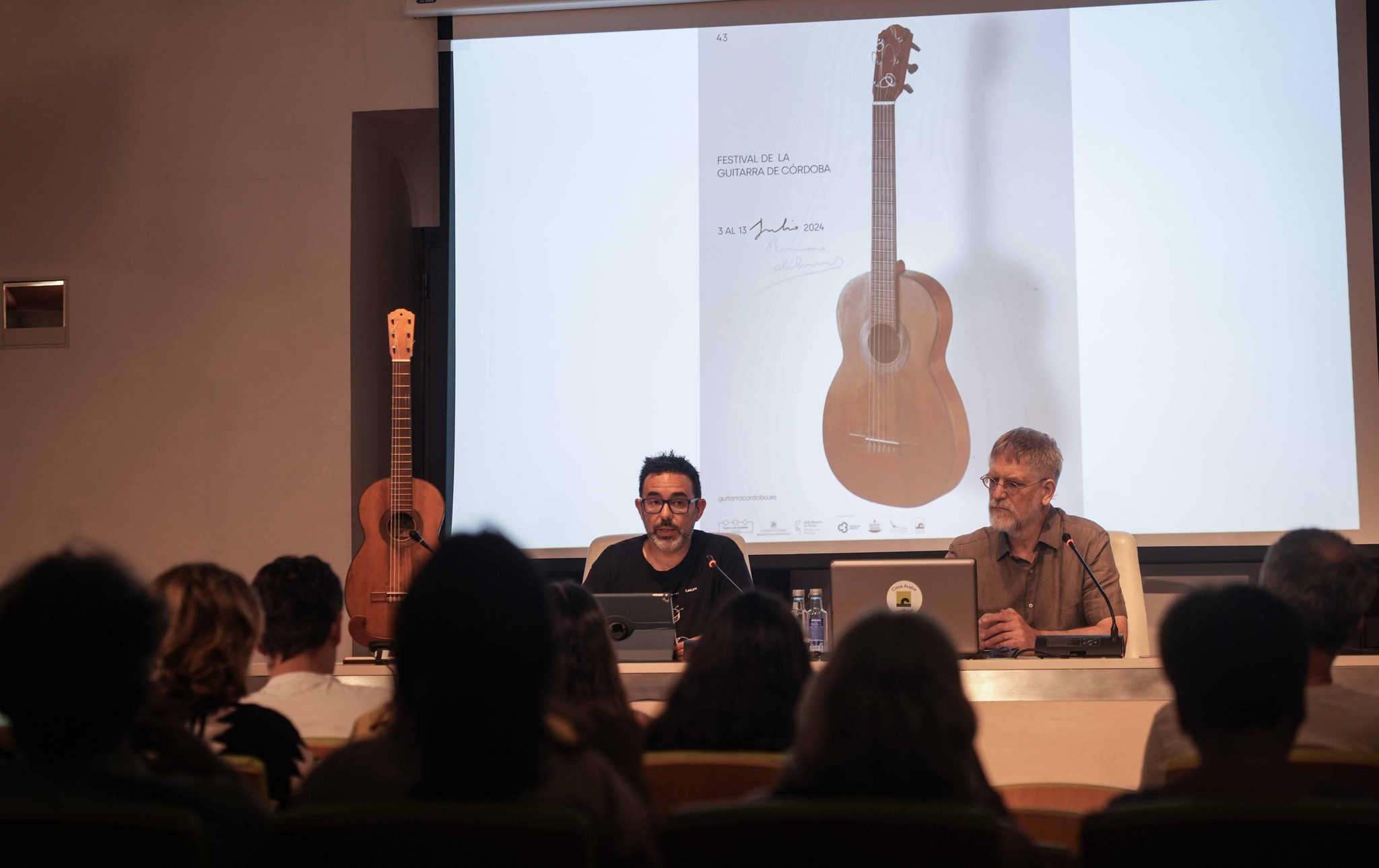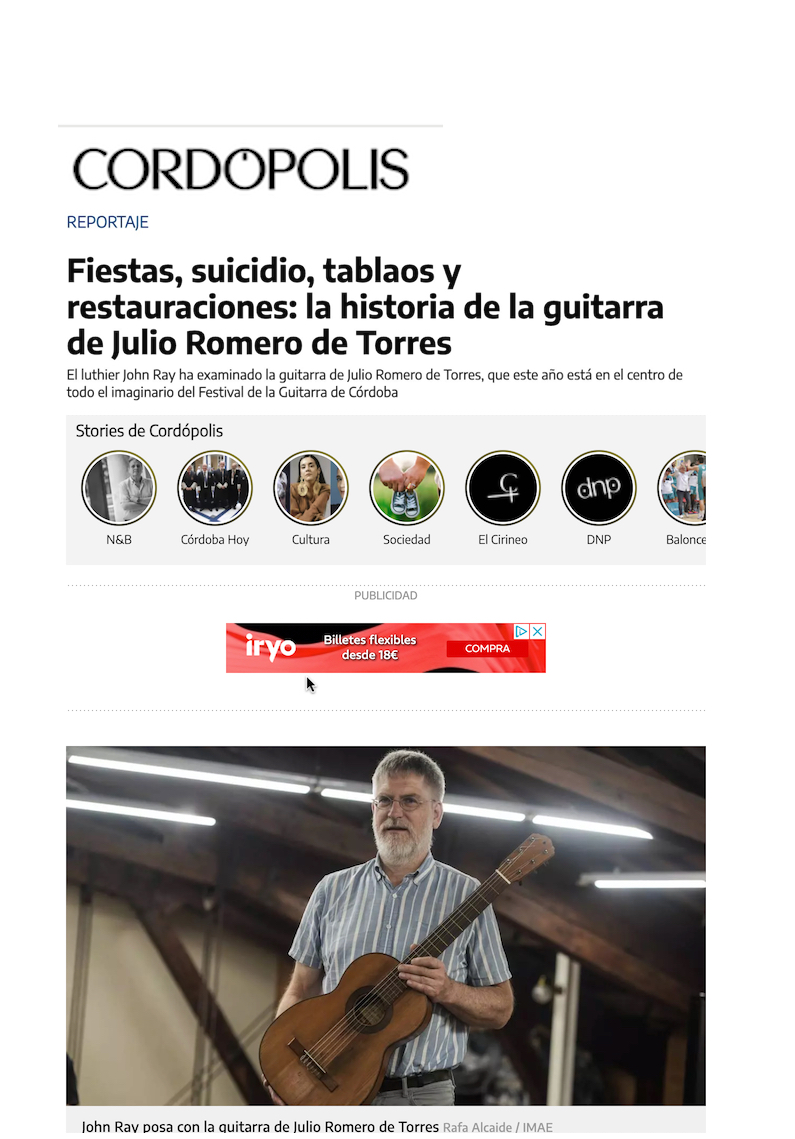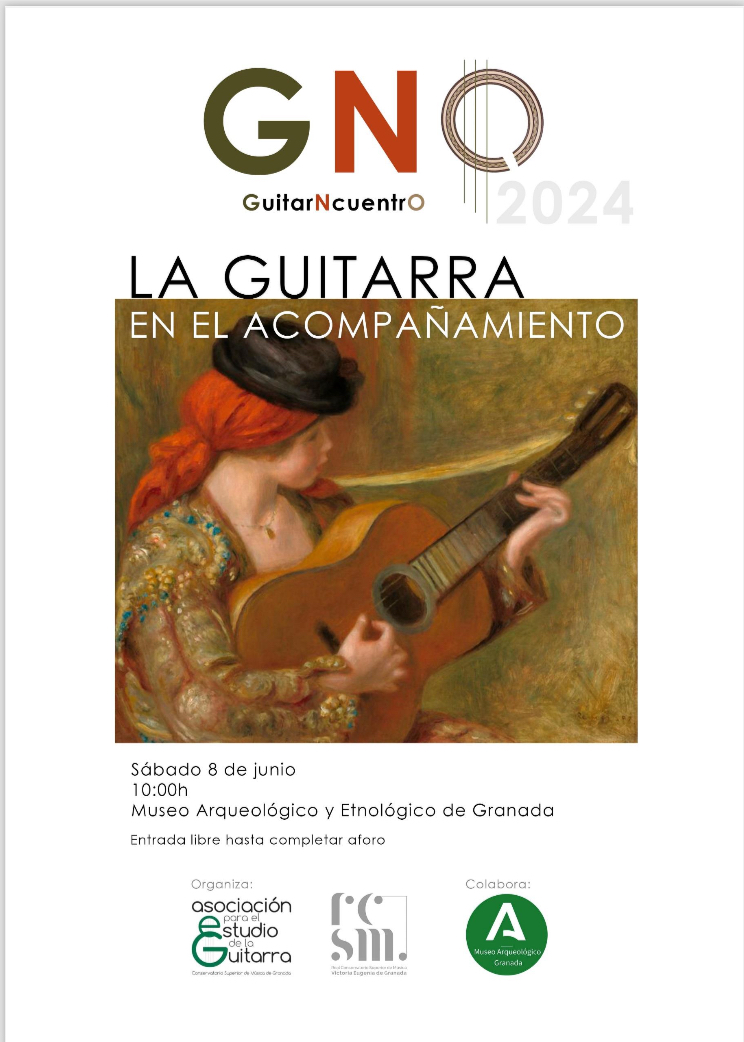 One of the highlights of my four days in Córdoba was the Andalusian Guitar Quartet on July 9. The concert consisted of only one piece of music: Cuerdas del viento by David del Puerto for soprano and guitar quartet. A challenging piece of music but full of beautiful poetry from Lorca and stirring musical passages. We were able to spend some time afterwards with the members of the quartet so I met Paco Bernier for the first time. I already knew Antonio Duro, David Martínez and of course my friend Javier RIba. Sachika Ito is the soprano who joins them for this vocal incursion and she came to dinner that night too. All in all a very enjoyable evening for us. You can catch the quartet this summer in Coria, Spain at the guitar festival there on August 6.
One of the highlights of my four days in Córdoba was the Andalusian Guitar Quartet on July 9. The concert consisted of only one piece of music: Cuerdas del viento by David del Puerto for soprano and guitar quartet. A challenging piece of music but full of beautiful poetry from Lorca and stirring musical passages. We were able to spend some time afterwards with the members of the quartet so I met Paco Bernier for the first time. I already knew Antonio Duro, David Martínez and of course my friend Javier RIba. Sachika Ito is the soprano who joins them for this vocal incursion and she came to dinner that night too. All in all a very enjoyable evening for us. You can catch the quartet this summer in Coria, Spain at the guitar festival there on August 6.




